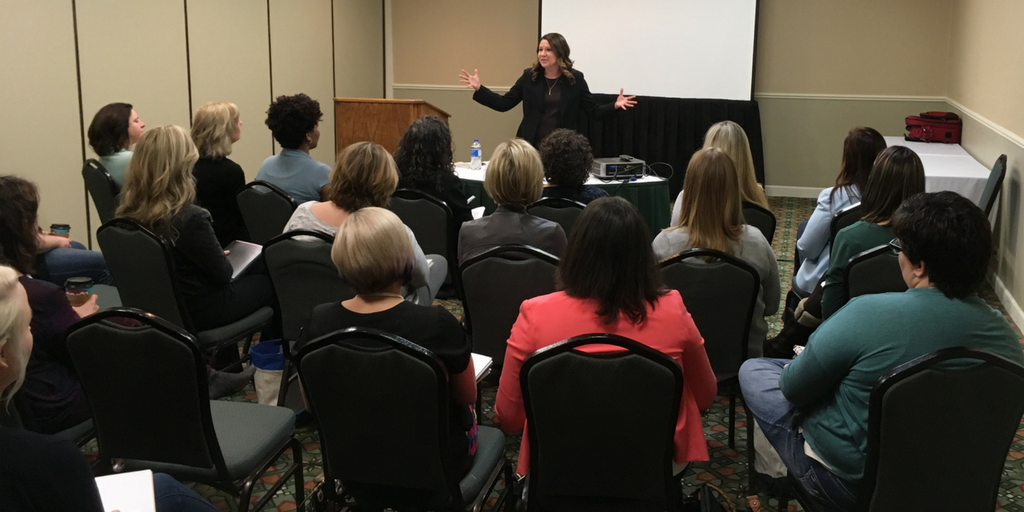By Julie Ford
Communication chaos – it’s happened to us all.
Disconnected
You have an appointment with Jane. A conflict arises preventing this meeting at the original time. You reach out via phone and leave Jane a voicemail, “I need to change the time of our meeting.”
Jane never get the voicemail. Not that the voicemail fails to record, but because Jane just isn’t into listening to voicemails and answering a ringing phone isn’t her thing either. You find this out only after you and she don’t connect for your meeting and Jane texts, “It’s 10am – am I in the wrong place?” You apologize for the mix-up and reschedule the meeting via text, and follow up with an Outlook calendar invite.
The day before the new meeting, seeing that you have no reply to your invite, you try texting Jane to confirm the appointment. Crickets. Nothing, no response.
In desperation, you remember that you’ve once communicated via Facebook Messenger, so you try that. “Are we still on for tomorrow at 10 a.m. at the Gathering Grounds, or would you rather meet at the Coffee Mill?”
This time, Jane responds, “Yep. 😊”
Umm?
Sea of Communication Modes
These days we can communicate in person, on the phone, via video chat, text, voicemail, snail mail, email, and social media IM. Even with this sea of choices quite literally at arms-length, instead of effectively and leisurely floating along, we’re drowning.
In his article, Communicating Across Differences, John Gilio notes that 75% of each workday is consumed with talking and listening and yet 70% of that communication fails. When communication fails at work, we lose customers, money, opportunities, and face.
When we don’t communicate well at home, we are running to grab chocolate chips at midnight, we contribute bake sale items a week late, we drop the ball entirely on attending our kid’s MVP ceremony, and we forget date night altogether.
This assumes that we even get the chance to connect in the first place, unlike our “Jane” situation above. What gives? How can we turn this around so we can have more intentional and effective communication?
Back to the Sandbox
Somewhere between the invention of the answering machine and auto-correct, we forgot about why we communicate. We want at least a two-way connection, sometimes more. We have talkers and listeners. And after listening, most of us expect a response.
Seems simple, but with the giant sea of choice in how to accomplish what used to take a string and two cans, we need a refresh. Let’s talk about it, shall we?
Communicate About Communicating
Duh. Sounds too elementary, right? When was the last time you sat with a colleague, prospect, teacher, coach, or family member and actually asked them how they’d like to hear from you? Here are the not-so-secret but oh-so-magical steps to beating communication chaos:
-
Know your communication profile
-
Know the profile of the person on the other side of the can.
-
Practice flexible connection
1. Know Your Communication Profile
How do you prefer to communicate? What are your favorite modes given your work and life style? Does IM annoy you? Is your voicemail a pain? Is your email not connected to your mobile device causing disruptive delays to your response times?
Choose what works best for you, and where/when appropriate, ask to be communicated with in that form. However, be aware of which side of the communication your sitting (see step 3.)
2. Know the Profile of the Other Side
How do THEY like to communicate? When you’re communicating with others, it can be tempting to exert what I call communication arrogance. You pick your preferred mode of communication, say, texting - and if they can’t accommodate, they lose. The trouble with that is that you lose, too. You lose connection, opportunities, and often credibility.
He’s not a good communicator – he leaves me guessing.
She never gets back with me.
So how do you uncover someone else’s communication profile, especially if they’re a prospect or stranger? Here are three ways to try and I’d use them in this order.
Observe – It might be obvious. If someone contacts you out of the blue via email, mirror their action. Email them back. Easy. Is Grandpa all of a sudden tickled to be texting? Fab, then get those thumbs rockin and rollin! Are you getting responses from social media via IM, continue the conversation with that prospect there. Meet people where they are, and then check in from there. “Is this how you prefer to communicate?” Which leads me to the second (and most effective) way to learn a communication profile.
Ask – If you have the chance to contact them, like at a networking meeting, just ask using two modes of communication you most prefer, “how would you like me to follow up, via phone or email?” If you can’t ask the person with whom you’re communicating, ask someone who knows them better than you do. “Hey, does Sam prefer face to face meetings or could we get away with a video call?”
Assume – this is reserved for the totally blind contact or mass communication, like newsletters or announcements for a school fundraiser. Truly, don’t go here unless you’ve exhausted other options. Using the “norms” that go generation by generation can get you in trouble. I know 85-year-olds who love email and a 12-year-old who is over the moon about a posted letter in the real mailbox at the curb.
3. Practice Flexible Connection
Consider the connection you’re trying to create. Is it for business? If so, are you the client or the seller? Are you networking with a referral partner or colleague? Are you the mentor or mentee? Is this a family/friend connection? What do you hope to accomplish with the connection? Gain information from your child about an upcoming event? Set up a dinner date with friends? Are you the one asking for a favor or are you the one in need?
Your approach to communication will vary depending upon which side of the string you’re on and what your intentions are for the connection. If you’re the one asking for something (information, unpaid mentoring, a favor, referrals, business), you’ll want to make the transaction as simple and painless as possible.
If the collaboration is mutual, you have a bit more leeway to stick to your preferences. You can ask to meet half-way between your locations or via video rather than in person to honor your time.
If you’re the one providing the favor, paying for a service, or giving guidance to another person without expecting payment, you are holding the communication preference cards and can feel okay about choosing the time, place, mode and length of the connection.
Common Courtesy
It seems elementary, but we’ve lost a bit of common courtesy somewhere in the evolution of telephony. If you want to set yourself apart and keep your connections, it’s well worth spending a few extra minutes communicating about communicating with family, friends and colleagues.
If you’d like to work through your profile and go over tips to learn the profile of others, email me at Julie@julzoflife.com and we’ll set up a Cool the Chaos call (on me!) to get you reconnected!
 Julie Ford is a certified life coach, speaker, trainer, and author of Creating Time and Energy. She helps moms and dads through parenting chaos. Individuals hire her to help them trade their "badges of busy" for intentionally full lives. Organizations hire her because they value the next generation and when things are running smoothly at home, amazing things can happen at work! With one-on-one and group coaching, she helps her clients to define what matters most in their lives, and to realize what is and isn’t working. Collaboratively, they move through a customized plan to implement habits that serve rather than sabotage their intentions. Her clients find more joy and less chaos in every stage one habit at a time. Connect with Julie on Facebook, Twitter, and LinkedIn.
Julie Ford is a certified life coach, speaker, trainer, and author of Creating Time and Energy. She helps moms and dads through parenting chaos. Individuals hire her to help them trade their "badges of busy" for intentionally full lives. Organizations hire her because they value the next generation and when things are running smoothly at home, amazing things can happen at work! With one-on-one and group coaching, she helps her clients to define what matters most in their lives, and to realize what is and isn’t working. Collaboratively, they move through a customized plan to implement habits that serve rather than sabotage their intentions. Her clients find more joy and less chaos in every stage one habit at a time. Connect with Julie on Facebook, Twitter, and LinkedIn.








 Julie Ford
Julie Ford



